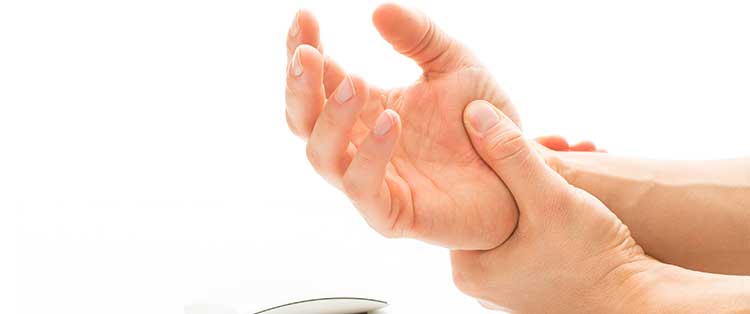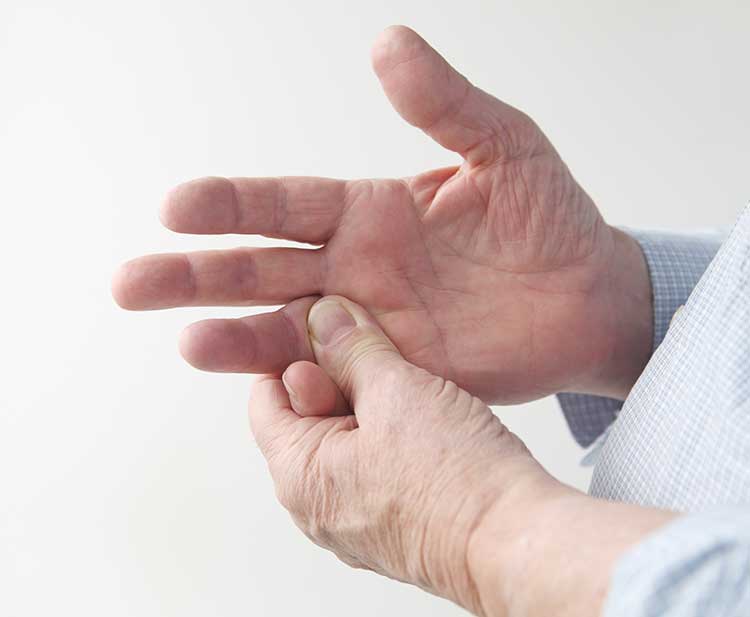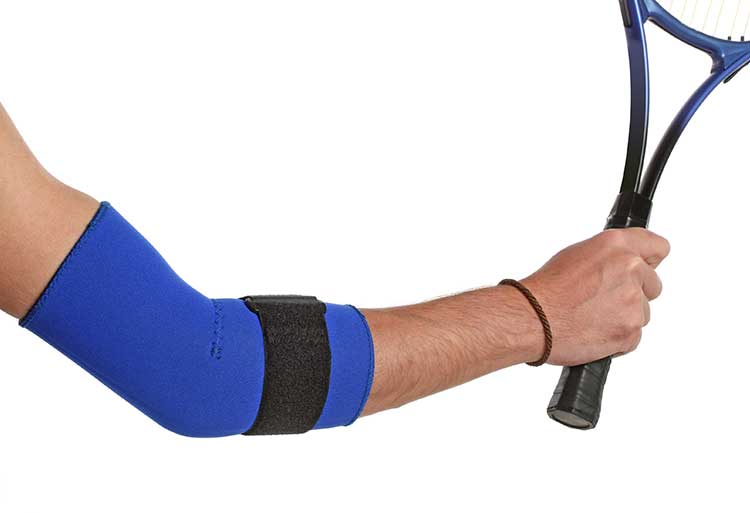
Get back to your regular activities with Orange County Orthopedic Center
There are several different causes of pain in the arms and hands, ranging from simple injuries to complex orthopedic conditions.
- These types of issues can take a long time to heal, especially since it is difficult to completely rest your arms and hands
- Some of the most common conditions we see with this area of the body include overuse injuries
Carpal tunnel syndrome – This condition occurs when the nerve that runs from your forearm into your hand becomes pressed. Many things can contribute to carpal tunnel syndrome, including heredity, hormonal changes, and overuse of your hand. It’s not uncommon to feel numbness and tingling in your hand and wrist, in addition to pain. These symptoms can occur gradually and at any time. Carpal tunnel syndrome can be treated non-surgically by wearing a brace at night, steroid injections, and activity modification. Surgical methods can include dividing the top of your carpal tunnel in order to decrease pressure.
Tennis elbow – Caused by any type of overuse, not just from playing tennis, this condition is characterized by the inflammation of the tendons on the outside of your elbow. Athletes, painters, and carpenters are especially prone to tennis elbow, and it most commonly causes pain and a weakened grip. Non-surgical treatments like physical therapy, wearing a brace, and steroid injections are typically effective in treating tennis elbow, but surgery that removes diseases muscle might be used.


Golfer’s elbow – Similar to tennis elbow, golfer’s elbow develops on the inside of your elbow rather than the outside. The pain occurs where your tendons attach to the outside of your elbow (the bony bump), and many individuals also experience weakness, stiffness, and numbness. Golf, football, baseball, and weight training can lead to golfer’s elbow. Relief can come from icing, medications, and physical therapy. In rare cases, surgery to repair the tendon might be necessary.
Elbow fracture – A direct blow to the elbow or a fall can result in an elbow fracture, or broken olecranon. This type of injury usually appears by itself due to an injury, but it is possible for it to be part of a more complex elbow injury. Symptoms include sudden and intense pain, swelling, bruising, tenderness, numbness in fingers, and the inability to straighten out your arm. A sling or splint may be used to hold the elbow in place so that it can heal. Sometimes, a cast is used. For more severe fractures, surgery can be used to secure the bones back in place.
Elbow dislocation – Dislocation occurs when the joint surfaces are separated. An elbow can become dislocated if an individual falls onto an outstretched hand, which drives the elbow out of its socket. Some complex dislocations involve bone and ligament injuries. A dislocation will result in pain and the elbow will appear deformed. The elbow can be manually realigned by a doctor with the assistance of pain medication. Simple dislocations can be treated with a splint or sling and then early motion exercises. In some cases, surgery is needed to restore alignment and to repair damaged ligaments.
Trigger finger – Trigger finger is characterized by the thickening of the sheath located near the palm, which can cause the tendons that pass through to become irritated. This leads to pain and potentially locking of the finger. Trigger finger is generally caused by overuse and can be treated early with anti-inflammatory medication. Surgery may be necessary in extreme cases, and consists of opening the affected sheath with a small incision.
Distal radius fracture – This is essentially a broken wrist. There are varying degrees of fracture of the distal radius and the treatments that are necessary. Wrist breaks are most commonly caused by falling onto an outstretched arm. The symptoms are immediate pain, bruising, tenderness, swelling, and visual deformity. A plaster cast or a splint may be used to keep the bone in place so that it can heal. In severe cases, the bones may be aligned surgically.

